
After a long week of work you deserve to kick back and relax. If the weather’s nice, if would be great to be able to do this outdoors. But the reality is that your backyard has long been neglected and it’s in no state for hanging out.
You’ve let many summers go by without perking up your space, so it’s time to take action this year. To start, consider an outdoor sectional sofa, which can be the centerpiece for gatherings and more.
There are several types of modular outdoor sofas with various features and layouts too. So, you’ll need to educate yourself before you can get to work.
This article will show you how to choose the right one, so you’re confident and happy with your arrangement.
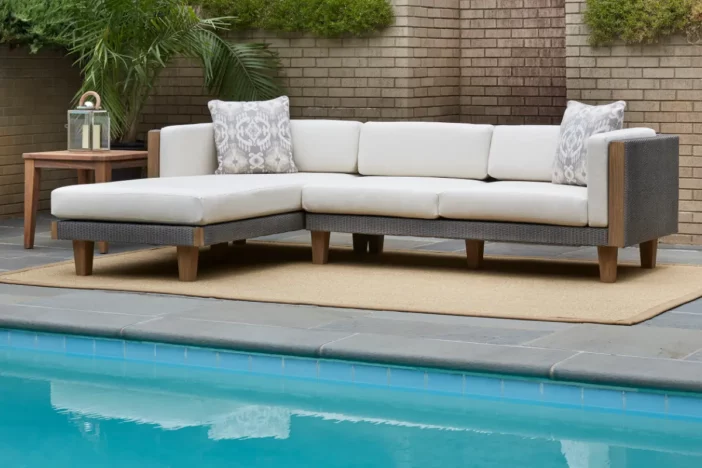
Types of pieces
First of all, outdoor sectional sofas are modular, which means that you can build your configuration with different pieces. In order to do that, you should first be aware of the various kinds of components. That’ll help you plan a setup that aligns with your space and needs.
Armless Seats
Armless seats are the most flexible pieces available. You can place them between corner units, or you can utilize them to extend the length of the sectional. This makes them ideal for expanding your seating capacity. They vary in width from single chairs to two and three seat sofas.

Corner Units
Corner units are typically angular and they anchor the corner of any layout. As expected, you’d need at least one for an L-shaped configuration and potentially two for a U-shaped one.
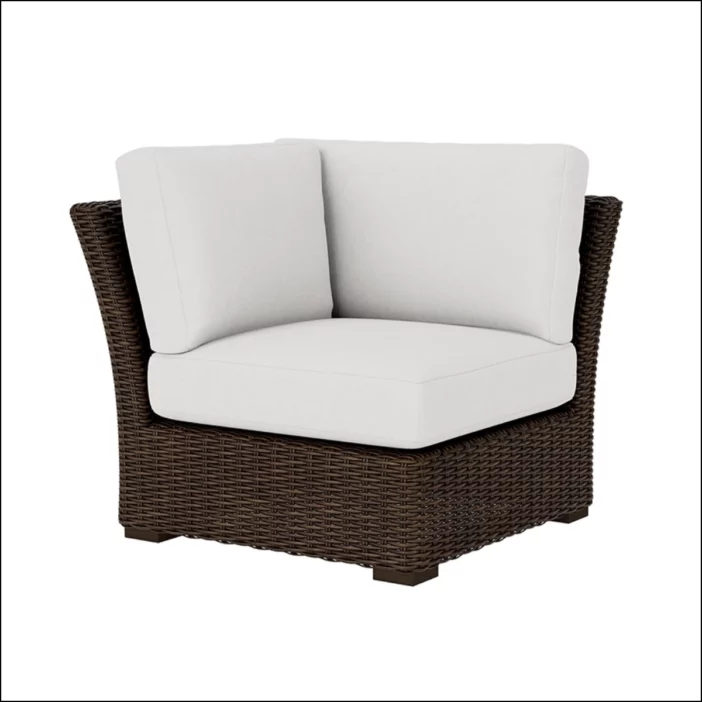
Left/Right Arm Units
This piece type has an armrest on one side, and this helps to frame the edges of your layout. Here, placement is key; decide whether you want open-ended seating or defined sides. They can often be used in place of a corner piece for larger ensembles.
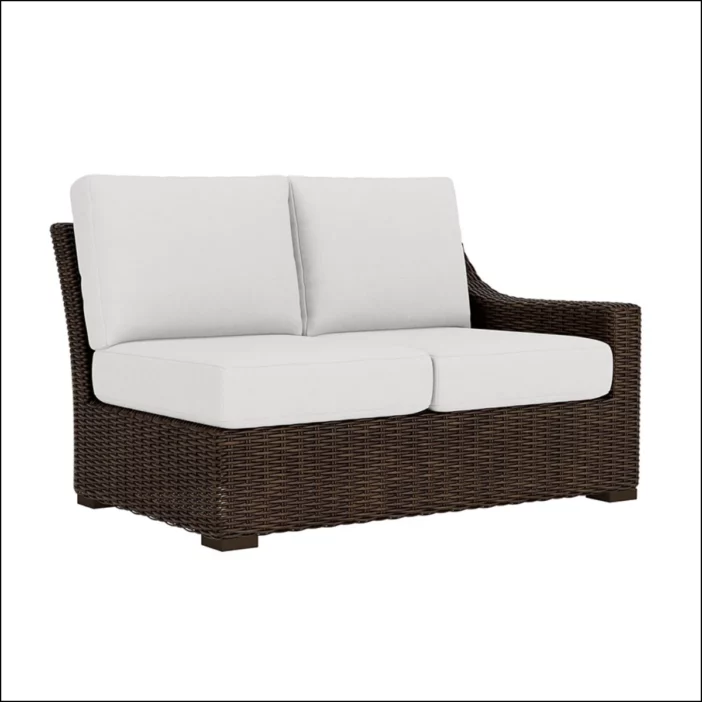
Chaise Lounges
As the name suggests, chaise lounges are excellent for lounging and sunbathing since the pieces extend out. They work well in asymmetrical layouts or when you want a daybed vibe.

Curved Sections
Angular layouts are traditional, so if you want to break out of that, use curved sections. These pieces create a circular or semi-circular flow, which makes them excellent for social areas with a central fire pit. They have a more relaxed feel and soften more linear architecture.
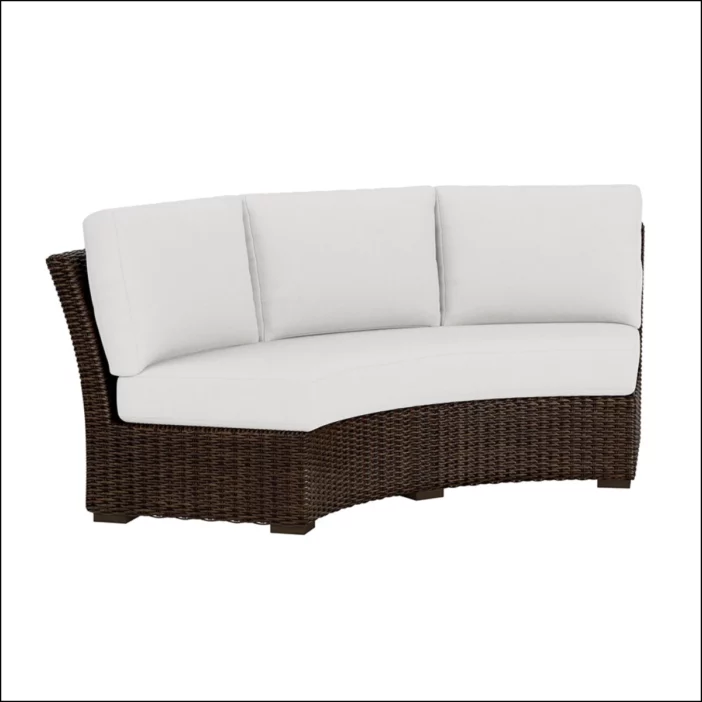
Ottomans
Ottomans can be used as footrests but they have so much more potential. Not only can they be utilized as extra seating but you can even use them as makeshift tables when topped with a tray.

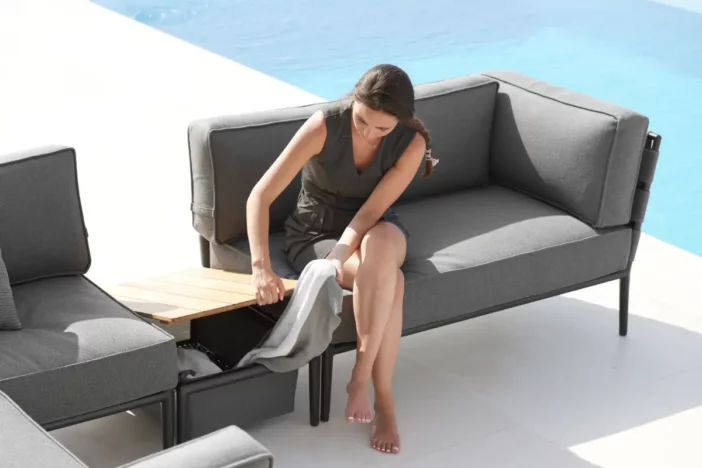
Features
Outdoor sectional sofas come in varying types but they also have specific features. These can enhance usability and comfort, so take a look at what your choices are.
Detachable or interlocking bases
Modular pieces can either snap together or float. Locking bases help prevent shifting, which is useful on smooth surfaces (like decks or tiles). Ideally, connecting hardware should make it easy to attach or detach pieces (when you want to) so you can rearrange things as the occasion demands. Additionally, you should look for an outdoor sectional sofa there are no restrictions on which pieces can connect. That ensures that you are not limited in your configurations.
Deep seating
Deep seating is fantastic for those who want to lounge lazily. For this, you’ll want seat depths of 30 inches or more; shallower seats (24-27 inches) work better for formal or dining-style situations. Make sure deep sectionals have plush upholstery to ensure luxurious comfort.
Built-in side tables & storage
Some patio sectional pieces come with built-in surfaces to hold your drinks, provide charging ports or offer storage for miscellaneous items. These features can help reduce clutter.
Adjustable backs or reclining functions
Who says that everyone has to be in the same position while relaxing on your modular sofa? With adjustable backs and reclining functions, you’ll enhance comfort for reading or sunbathing.
High vs low profile backs
Outdoor sectional sofas with high backs give more support and have a cozier feel. However, low backs are sleeker. Plus, they’re often better for preserving views in scenic spaces.

Modular layouts for patio sectionals
Now that you understand what sectional furniture pieces are available and some of the most popular features, we can move on to layouts. Here are some of the most common configurations and when to use them.
L-Shaped
The L-shaped configuration is best for corners, compact patios and medium-sized decks. It can also work on balconies or smaller patios where you want to maximize seating without crowding the middle. This is because the pieces fit snugly against walls or into corners.
Here, you’ll get good traffic flow around the perimeter. It also leaves room for a central table or fire pit!
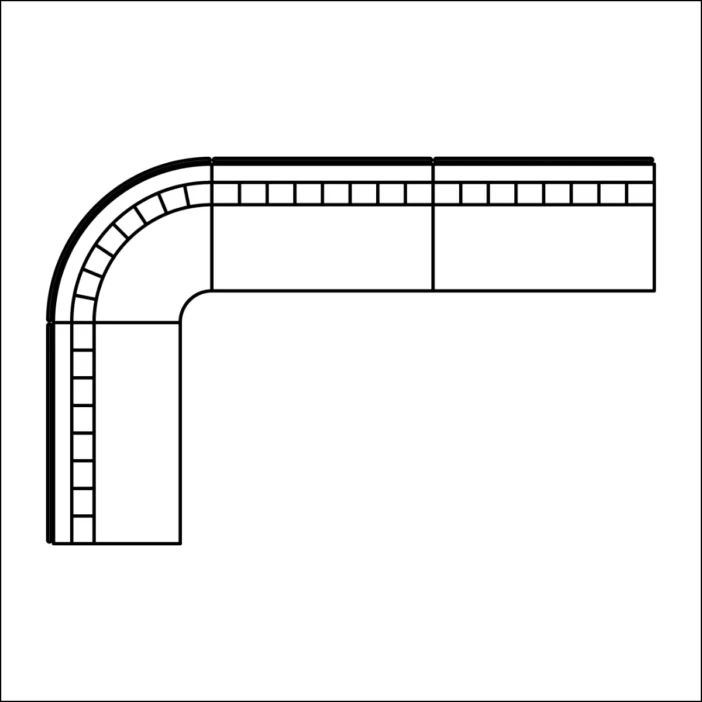
U-Shaped
You can count on the U-shaped setup for large patios, backyard decks and entertaining zones. Like the L-shape config, it frames a central feature, like a fire pit or table.
The main selling point here is that it’s highly symmetrical and social, as it facilitates group conversations. Just make sure there’s at least 3-4 feet of clearance around the exterior for easy access.
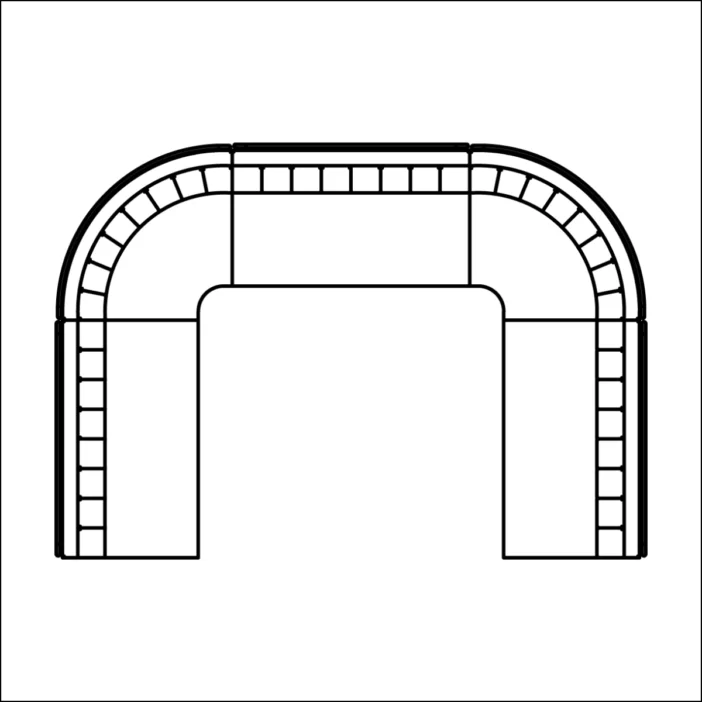
Curved or Semi-Circular
As we mentioned before, there are pieces you can use to create a curved sectional layout rather than an angled one. Put them together to promote intimate conversation around a focal point.
This adds fluid, visual interest, especially when placed around a round rug or circular fire feature. Or, for a truly unique design, you can form an S-curve for opposite facing seating.

Asymmetrical or Custom
If you have a multi-use patio or want a flexible space, then a good option is a asymmetrical or custom configuration. Pieces can be stored, swapped or extended, giving you much freedom in your seating design. Based on the occasion, you can change the setup to suit your needs.
Not only is this ideal for those who frequently entertain but it’s also great for renters who can set up something more permanent. Many sectionals have quick attach or release connectors to secure modular pieces together or allow them to be reorganized.
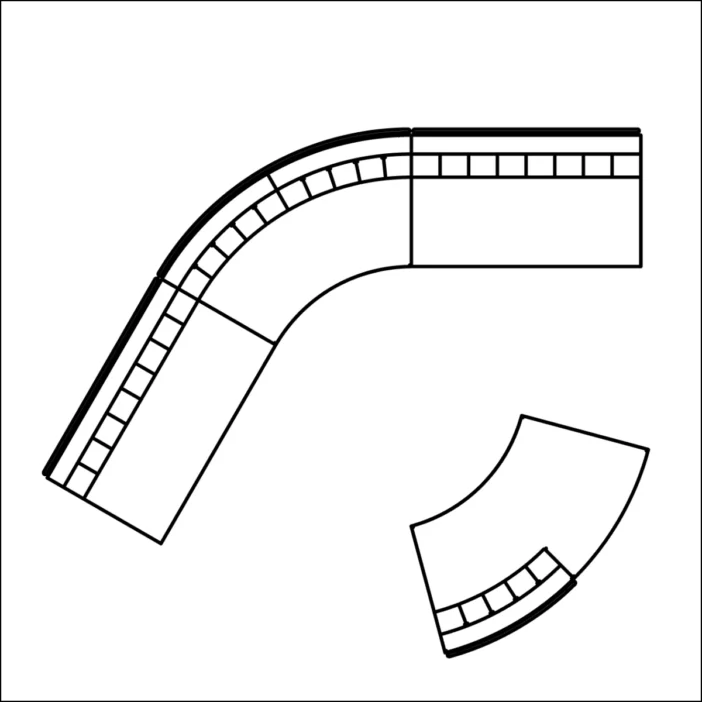
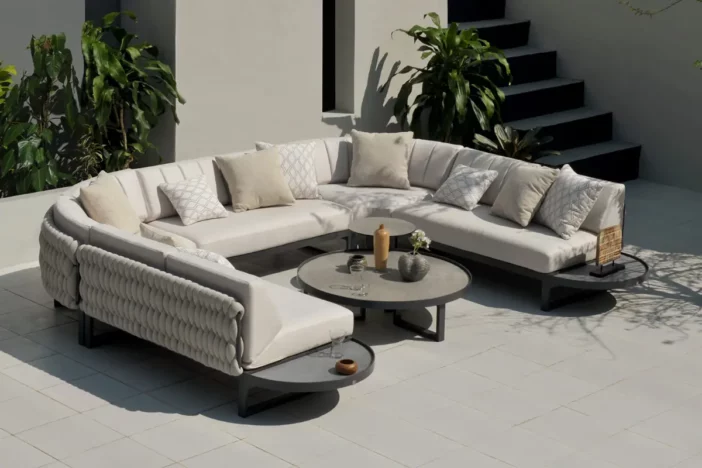
Additional furnishings enhance modular sofas
Of course, a sectional is almost always the star of the show. However, it’ll look and function much better if you complement it with accessories!
Tables
You can sit comfortably on the sectional but without tables, you might feel a bit restricted. You can place coffee tables centrally and they won’t just function as decor; you can also place drinks and snacks on them.
In addition, you can use side tables to fill in gaps where the coffee tables can’t reach, making them good for end seating. Console tables can sit behind the sofa to add height and hold lighting or plants.
Planters
Greenery can improve the ambiance and also soften hard lines. You can add a few tall ones to provide privacy. They also have the added benefit of defining the edges of your seating area.
Outdoor rugs
To visually anchor the sectional and define the seating zone, use outdoor rugs. Choose a size that’ll allow at least the front legs of each piece to sit on it.
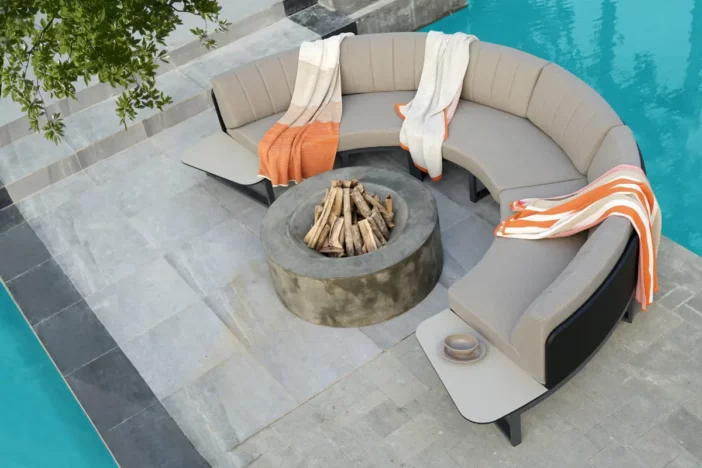
Fire pits & fire tables
Fire pits make a great centerpiece, especially for U-shaped or curved layouts. If you want both heat and a surface for drinks, then opt for a fire table instead.
Whatever you choose, make sure that the fire feature is at a safe distance from all cushions. Ensure that you follow safety codes too.
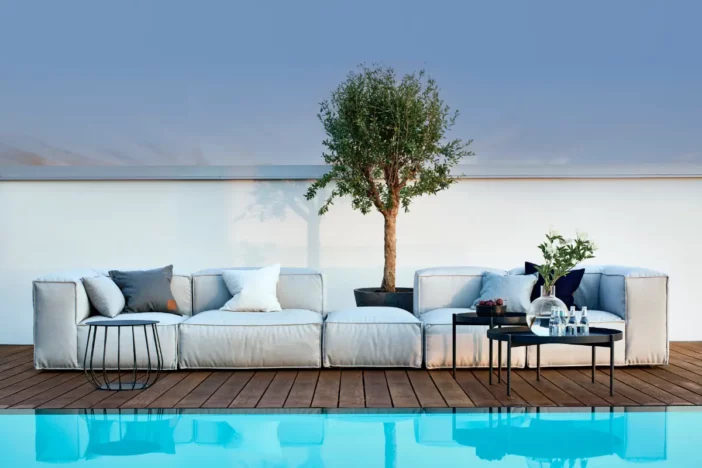
Tips
Choosing an outdoor sectional sofa is just half the battle. Here are some crucial design and comfort tips so that your setup works well.
Allow proper walkway space
You may have an amazing outdoor sectional sofa on your hands but you need to leave enough space to get around. In general, you should have at least 30-36 inches of space for walkways behind or around furniture.
If you’ve added tables, then leave 18-24 inches of space between seats and central coffee or fire tables. That way, you’ll have enough legroom.
Seat cushion depth and comfort
Believe it or not, but the seat cushion depth you choose will depend on what you want to use the cushions for.
For example, if you want to casually lounge, you’ll want a deeper depth. We’d go for 30-36 inches. Otherwise, for upright dining or conversation, you’ll want 24-27 inches.
Scale to the space
Your eyes can deceive you, so don’t buy pieces until you’re sure they fit. You can do this by using tape or cardboard on the ground to outline pieces.
Take a good look and make sure you don’t overstuff small spaces. Negative space is just as important as seating!
Orientation matters
The way you place your outdoor sectional and additional furniture matters, especially if you want to maximize space.
For an optimal patio sectional configuration, direct the seating toward focal points, such as the view, fire pits, pools or outdoor TVs. The shade direction can also influence where you place chaise lounges or avoid afternoon glare.
Dual-zone potential
Those with larger spaces can consider splitting the layout into two. You can have a chat area with a small fire pit and a lounge area with chaises or a daybed setup.
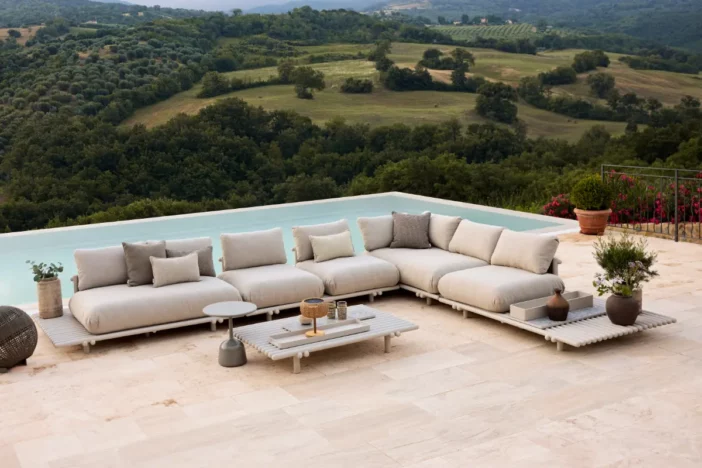
Choose your outdoor sectional sofa wisely
Picking the right patio sectional can make or break your outdoor living space. Planning an appropriate configuration with other elements in mind matters too.
As you can see, having the right setup goes beyond style or materials. It’s about being intentional with how you arrange your space so that it supports how you relax, entertain and move around.
Now that you understand the types of pieces, potential layouts and ideal additional furnishings, hopefully, you can create a functional and inviting outdoor space. As a result, you can make full use of your yard, whether it’s for solo use or for entertaining guests!





Leave a Reply